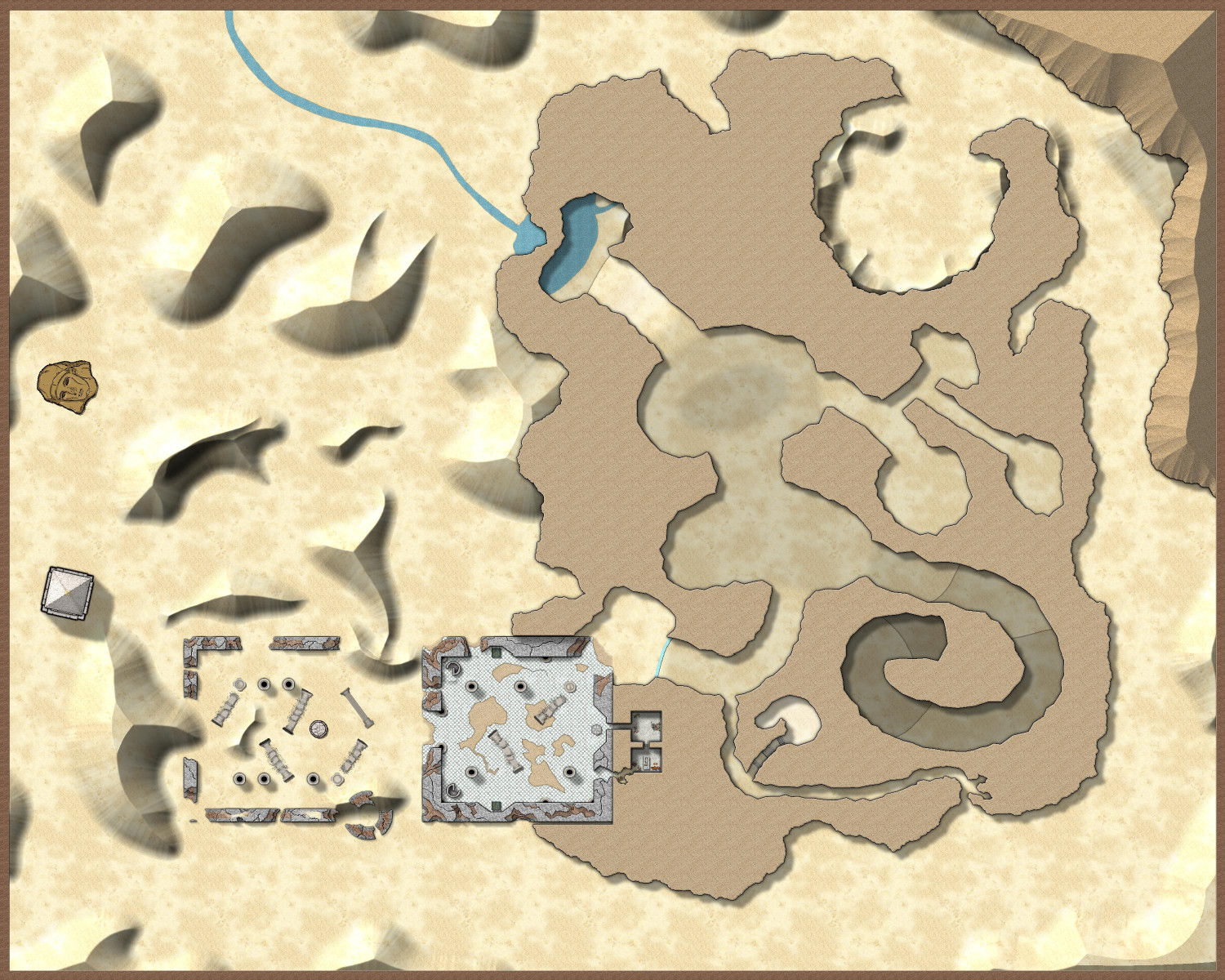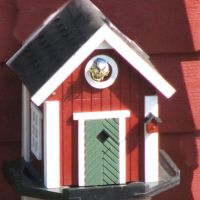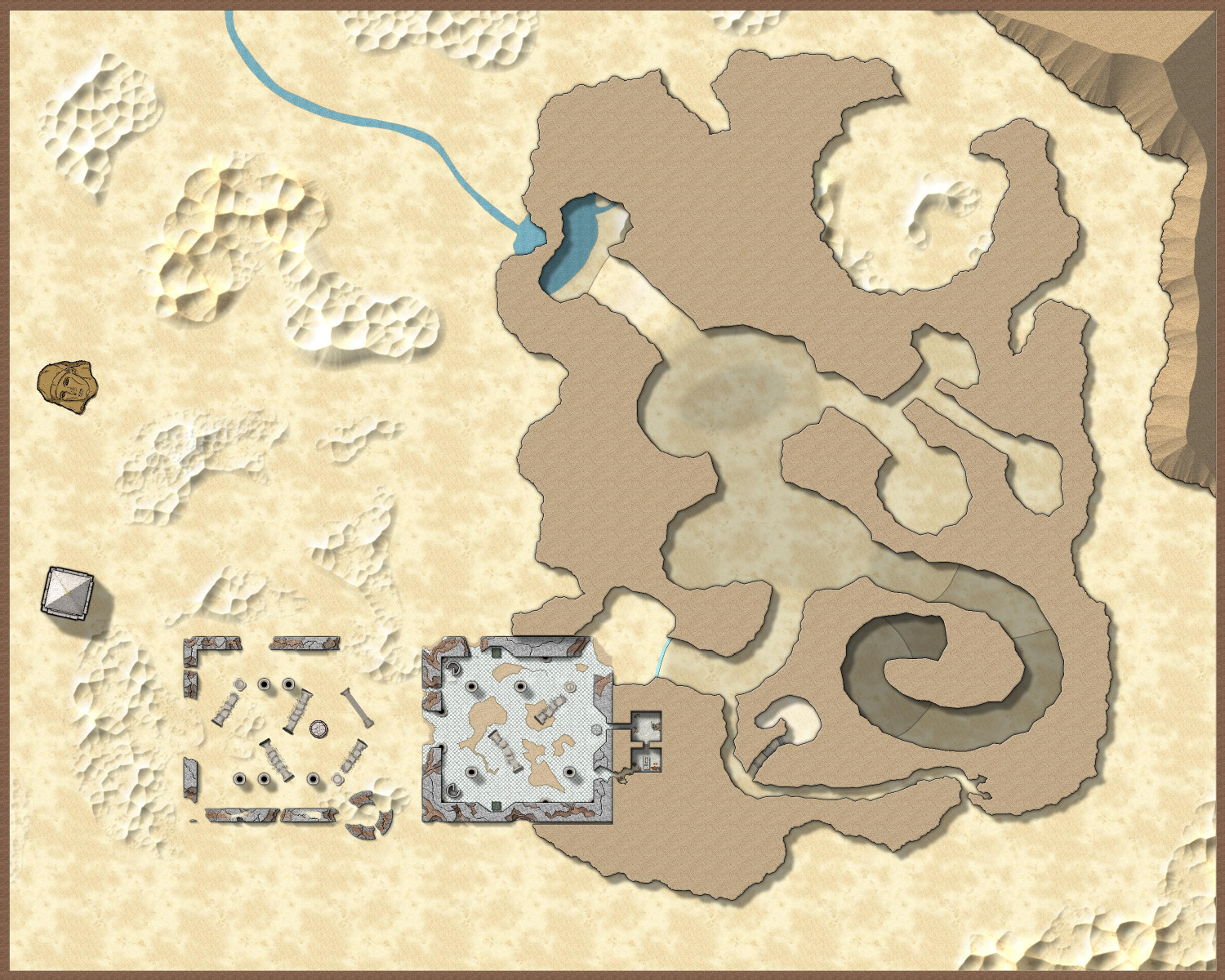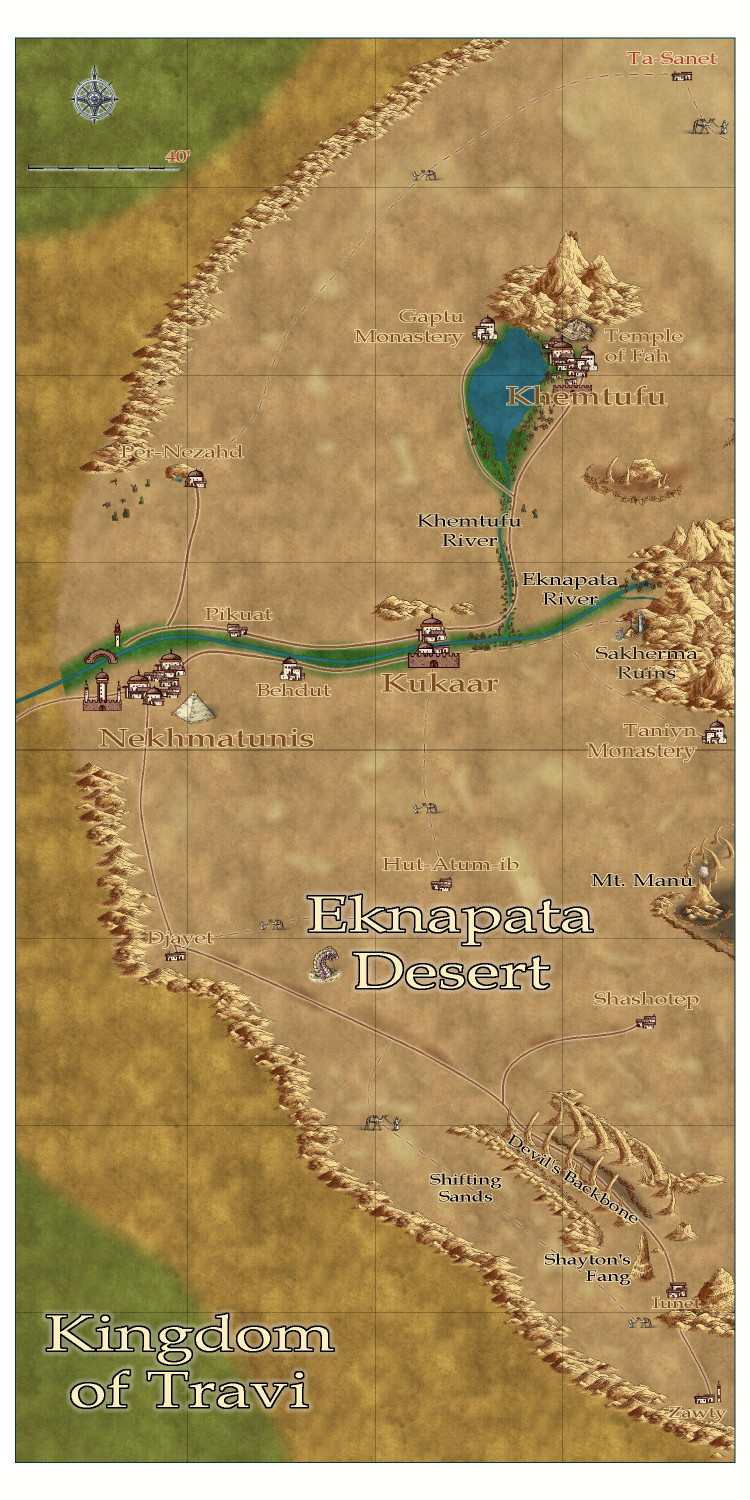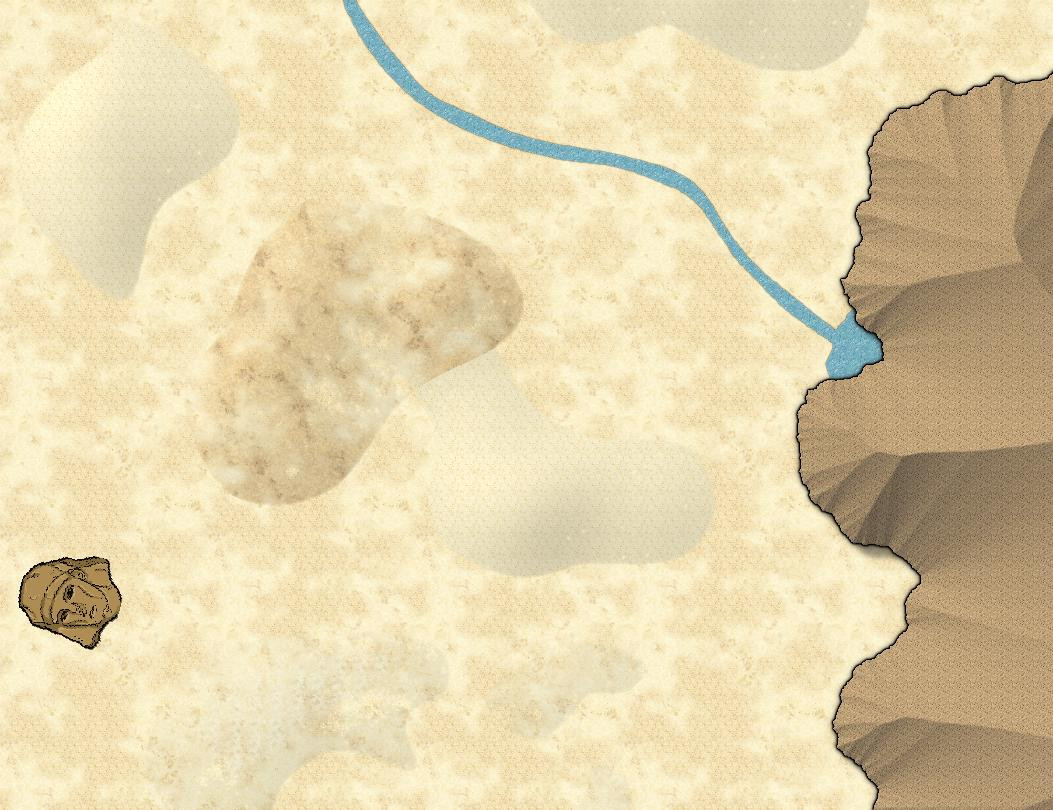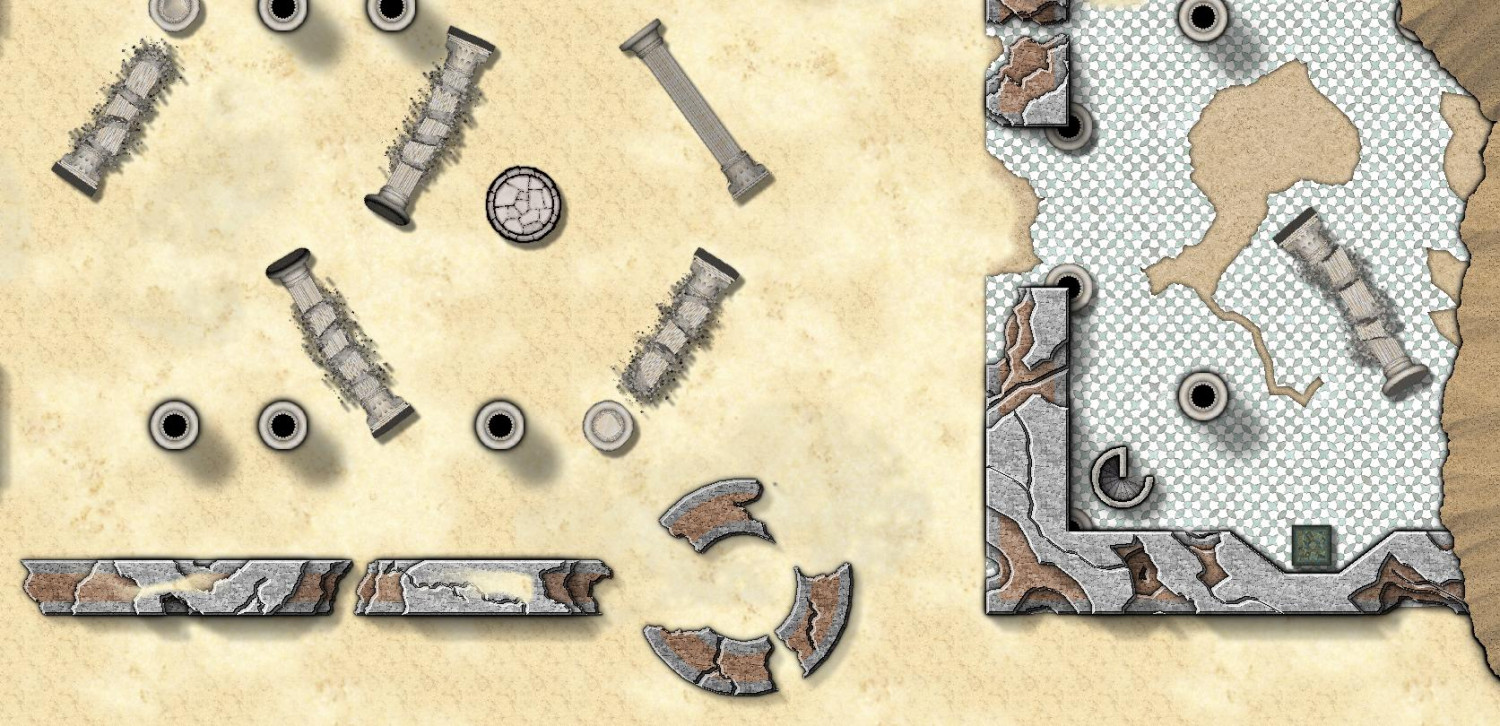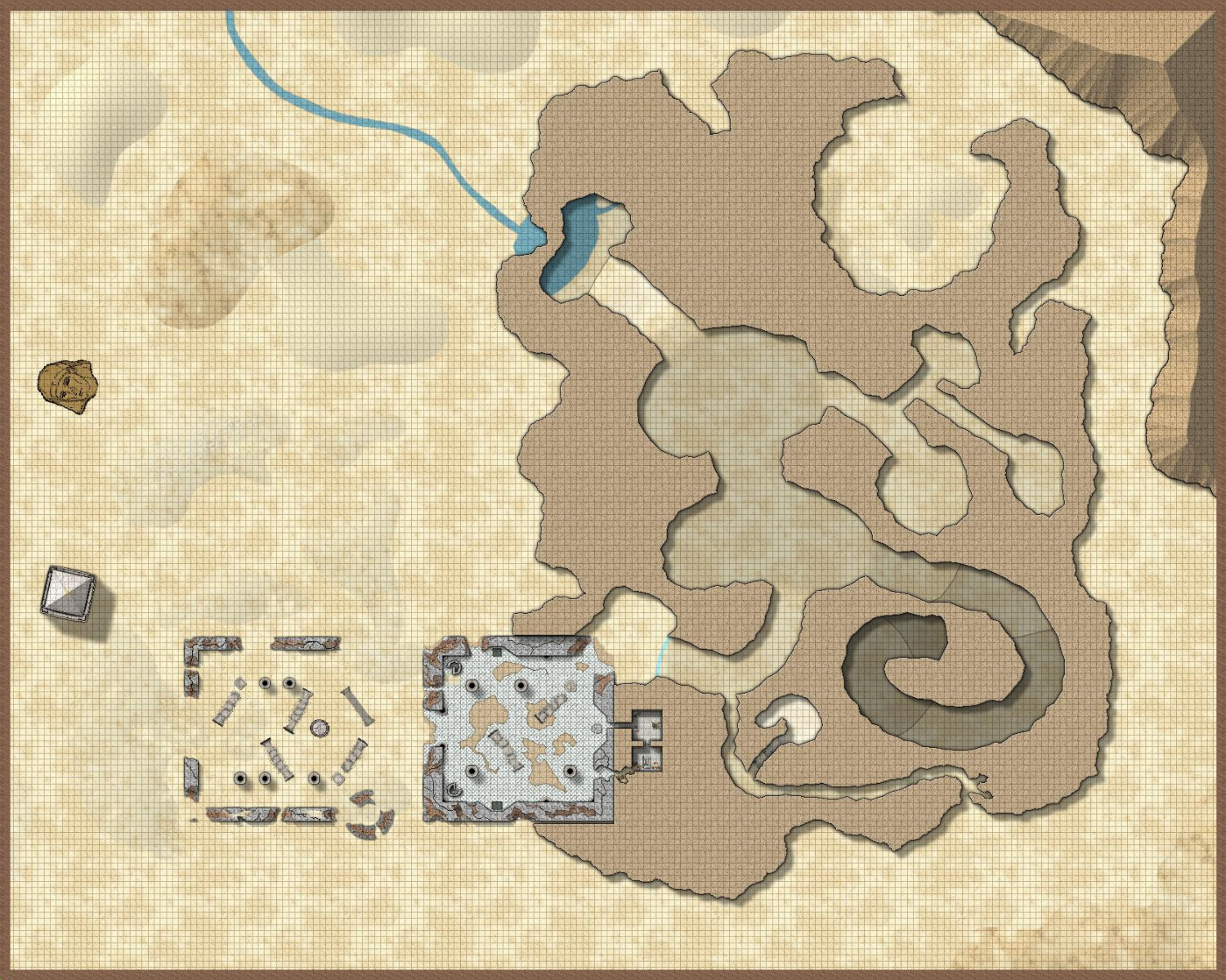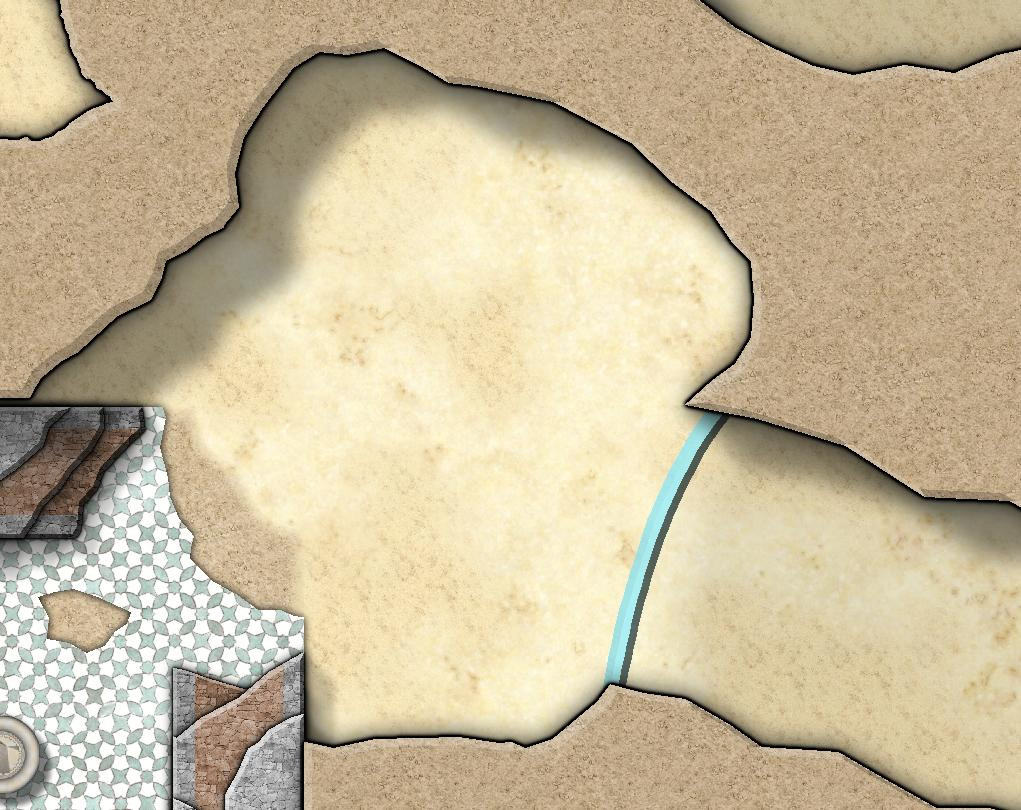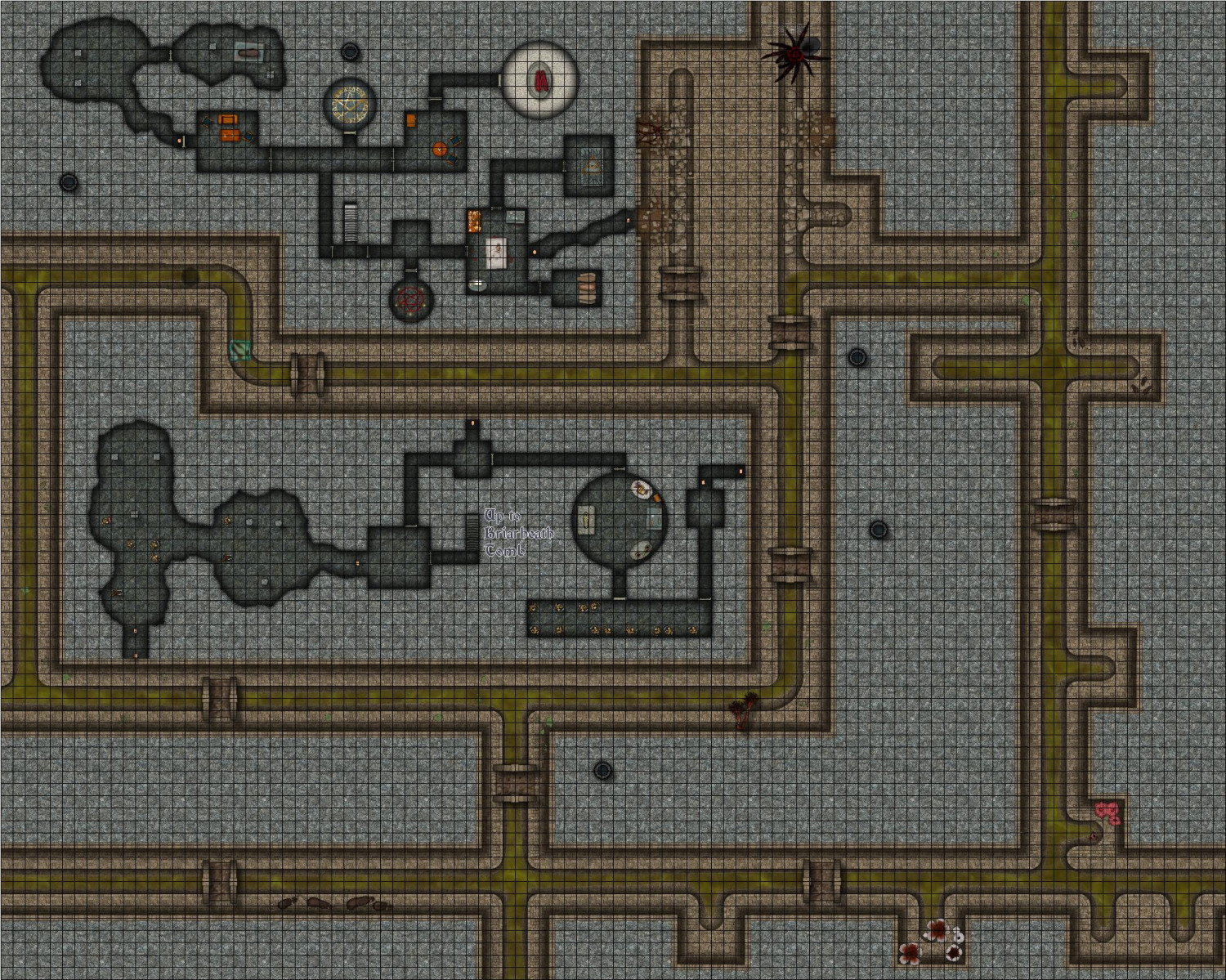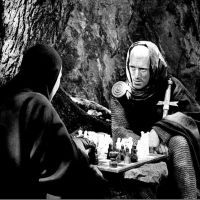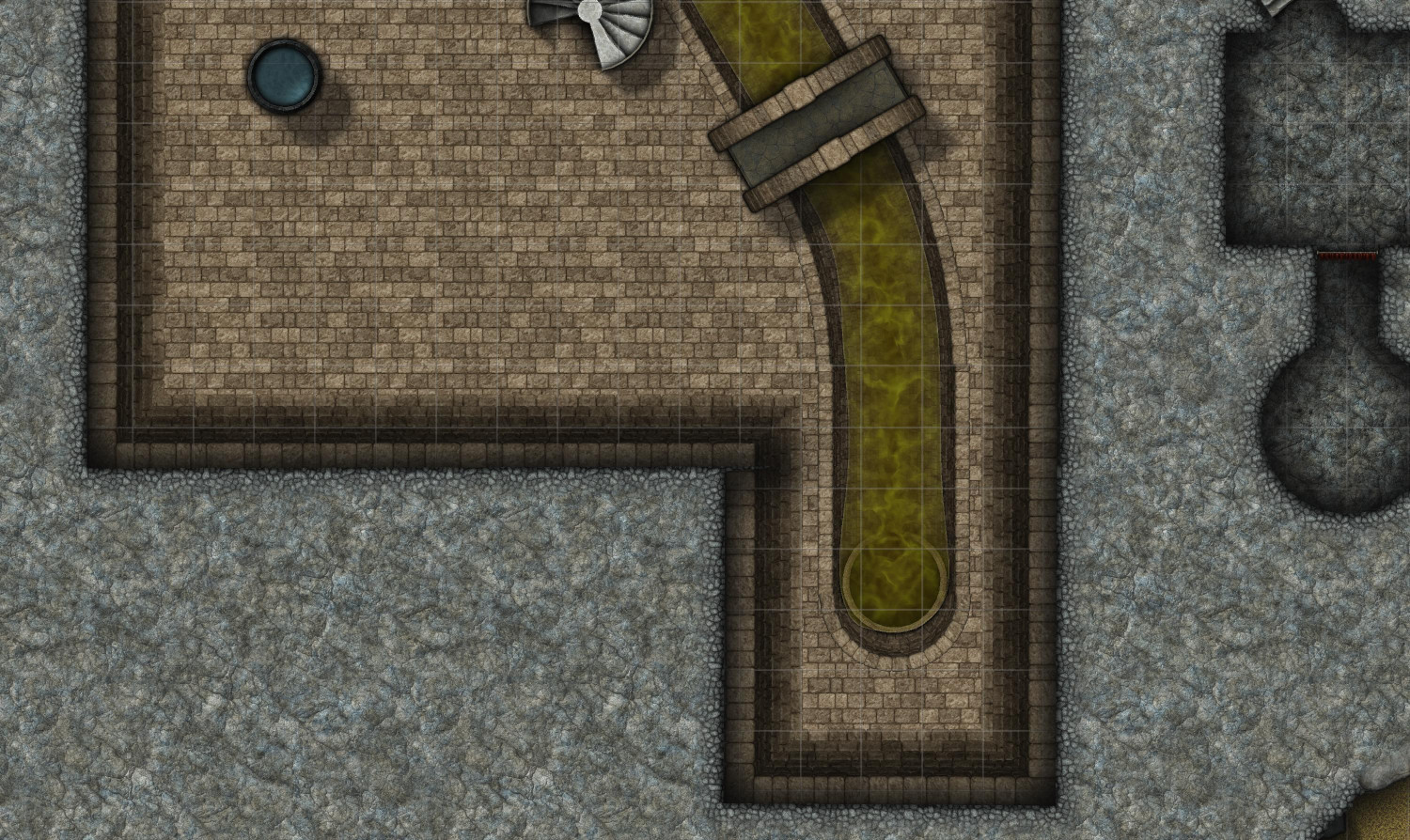Royal Scribe
Royal Scribe
About
- Username
- Royal Scribe
- Joined
- Visits
- 8,812
- Last Active
- Roles
- Member
- Points
- 3,198
- Birthday
- February 5, 1968
- Location
- San Francisco, California
- Real Name
- Kevin
- Rank
- Mapmaker
- Badges
- 16
Reactions
-
[WIP] - Sakherma Ruins
-
[WIP] - Sakherma Ruins
Here's what it looks like with those new sheet effects. I can add more dunes as well -- either a few big ones, or more smaller ones? Also, I may have attached the wrong FCW file before.
-
[WIP] - Sakherma Ruins
Working on the Sakherma Ruins, a ruined desert temple in the Mike Schley style. For reference, the ruins are at the edge of a mountain range (middle right) in the Eknapata Desert below.
The temple was built with a covered temple partially constructed into the hills, with a courtyard surrounded by walls but open to the sky. The bronze plates that made up the roof were stolen long ago by scavengers, so now what was the interior of the temple is also open to the sky (except for the portion beneath the hill).
Here's the above-ground portion. The other things in the desert are an obelisk, and the head of a once-gargantuan statue, both appearing on the parent map. The river is a small stream that feeds into the Eknapata River on the parent map.
I tried different approaches with the sand dunes. Some are a lighter shade of the sand, some are a partially-transparent darker shade. Let me know what you think.
I fabricated ruined walls by constructing them in three layers and then using the color key cutout to carve out bits of them. They're supposed to have a brown stone core with a lighter gray stone surface. (The Corinthian pillars come from CA49.)
Now for the inside. I tried to show elevation changes using the techniques that Ralf recently demonstrated in the Height Transitions demo. Most of it shows more gradual changes, using Edge Fade effects rather than the Glow effects that Ralf used. The passageway that spirals down to a level below (not yet mapped) used the Glow effect to show sharper transitions. And there are a few areas with higher elevation. One is a small "chamber" off of a narrow passageway -- there are even stairs in that passageway. The other is the wider passageway leading to the underwater lake. It slopes up and then back down to the water.
That blue line? That's supposed to be a wall of glass. I added a bevel and a transparency to it. Not sure it works, and I am very much open to suggestions for how to improve it.
Here's the FCW file if anyone wants to suggest different effects to improve the wall of glass, sand dunes, or anything else.
-
[WIP] Haunted Mansion
Still writing up the proper description but in the meantime, I figured I'd post what I think is the final version of the final map. More sewer encounters, including a giant spider, some rats (both giant and ordinary-sized), a gelatinous cube, and some hungry foliage. (Of course, a proper battlemap would use moveable tokens, but this is for flavor -- the creatures are on a layer that can be hidden.)
Oh, and a whole bunch of skeletons, and a few zombies -- an explanation for those empty crypts!
-
[WIP] Haunted Mansion
Here is Basement 2. Most of it is taken up by the mansion's sewer system, including a branch that comes from beneath the barn. There are shadows from the shafts above where waste is deposited into the sewers. Waste flows to the southern-most part of the line, where a chute connects the mansion's sewers to the municipal sewers. There are also two shafts here to connect the wells (one in the barn) to the water table below.
The secret stairs from the wine cellar connect to a small area here, with more stairs continuing even further below.
Here's a zoomed-in look at the chute that also shows a closer look at the effluent (with sheet effects copied in from Sinister Sewers).


